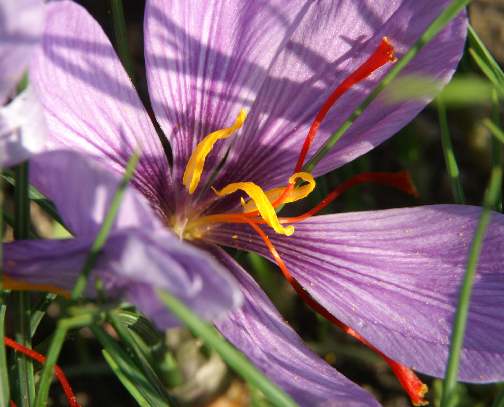Introduction
Crocus sativus or Saffron flower, is a member of the Iris family and the source of the world's most valued culinary spice: Saffron. The flower itself is a sterile, triploid mutation of flower Crocus cartwrightianus. Saffron flowers do not produce viable seeds but rather they grow asexually from corms. This means that the large area of distribution achieved by the Saffron flower-- which is found growing naturally in regions from Spain all the way to India--is due to human intervention. The importance of Saffron can be seen today in terms of market prices. One pound of the potent spice sells for aproximately $800 and it is used everywhere as an aromatic spice and also as a dye in textile production.

 Dried Stigmas from the Saffron flower
Dried Stigmas from the Saffron flower  Wild growth in Switzerland
Wild growth in Switzerland This Page completed by Derek Gorder
Proffessor Chiwon Lee
External links: http://www.uni-graz.at/~katzer/engl/Croc_sat.html
http://www.greekproducts.com/greekproducts/saffron/index.html
www.crop.cri.nz/home/products-services/publications/broadsheets/020Saffron.pdf